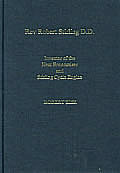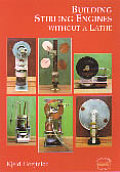| Fulfillment by (click here) |
Description | Price Estimate $ US |
|
 |
affiliate | Rev Robert Stirling
D.D.
- Sier Here is probably the only biography about the inventor of the Stirling engine. This unique individual was born into a family of famous engineers and some clergy. In fact, Robert was both. Eight days after his ordination he filed his first patent for what has now become known as the Stirling Engine. In many ways his invention was ahead of his time. Because of the many advantages over the internal combustion engine there is renewed interest in the Stirling Engine today. Because it is an external combustion engine it can use virtually any heat source. Three part book, the first being a "biography" of Robert Stirling and his brother James, the second part covering the development of the early air engines up to 1845, followed by various patents and historical papers. As the author says, very little detail is known of Robert Stirling's personal life, and much of the first section is drawn from University and Church of Scotland records. A lot of technical information for the hot air engine enthusiast in the second section. 189 illustrated and hardbound pages. Mair |
? |
 |
affiliate | Building Stirling Engines Without A Lathe
- Hoejfeldt Danish Accountant Kjeld Hoejfeld became fascinated with the concept of the Stirling, or hot air, engine and decided to learn more about them by building working models. It is usually assumed that doing this is only possible with a good workshop containing, at the least, a lathe:; something Kjeld did not have. Undaunted, Kjeld started investigating means of building the models without any machine tools and, using considerable lateral thinking and ingenuity, built his first working engine; subsequently he followed this with increasingly sophisticated models which cover the major configurations and types of Stirling engine. Only hand tools and soldering equipment were used, and much of the material came from scrap, including many useful parts from old personal computers, videos, record players etc., as can be seen below, as well as used food cans, paperclips and the like. In this book the author shows you how to build your first engine in detail and follows this up with slightly less detailed descriptions of how to build five other machines. There are no detail drawings, as the dimensions all depend on the material you can find, but the basic concepts and the construction methods are well covered and illustrated, so anyone interested in making things should be able to build their own working Stirling engine from the descriptions in these pages. Also included are a brief overview of the history of the Stirling engine, a look at some present commercial applications, and an Appendix listing some recommended books, videos and useful websites. The Stirling engine is the simplest primemover there is; the best way to appreciate just how really remarkable this machine is to build and run one, and now you can do just that, with only a few hand tools and some scrap material. Not only will you have a lot of fun building your engine, there will be the satisfaction of seeing it running, and of showing (and explaining it) to friends! 34 pages, pamphlet, Camden Miniature Steam Services |
$14 |